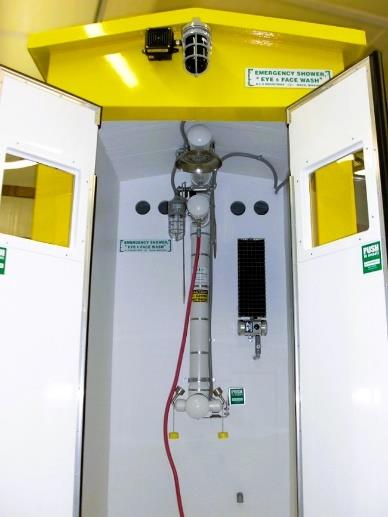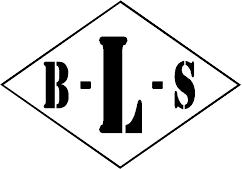Are Enclosed Safety Showers Worth the Investment? Pros, Cons, and Key Considerations

In industries where exposure to hazardous chemicals, extreme temperatures, or high-risk materials is a part of daily operations, emergency preparedness is non-negotiable. One crucial piece of equipment that plays a vital role in employee safety is the enclosed safety shower. Unlike traditional open drench showers, enclosed models are designed to provide superior protection and efficiency in emergency decontamination scenarios. But with a higher price tag and specific infrastructure requirements, are enclosed showers truly worth the investment?
What Are Enclosed Safety Showers?
Enclosed safety showers are self-contained structures that combine a drench shower, eye/face wash stations, and often heating or insulation elements inside a booth or cubicle-like enclosure. They are designed to protect the user from external environmental conditions—like freezing temperatures or exposure to wind—during a decontamination event.
Unlike open showers, which are installed in open warehouse or lab spaces, enclosed models often include:
- Doors or curtains for privacy and containment
- Integrated heating systems for cold climates
- Insulation and drainage to control waste and temperature
- Interior lighting and alarms for increased usability and visibility
These features make them ideal for outdoor installations, remote sites, and extreme environments where rapid, efficient response is paramount.
The Pros of Enclosed Safety Showers
1. Temperature Regulation for Year-Round Compliance
One of the most significant advantages of enclosed units is their ability to maintain water and air temperatures within the ANSI Z358.1 standard (60-100°F). In environments subject to extreme cold or heat, temperature regulation is critical to ensure:
- The user can remain under the shower for the full 15-minute minimum duration without hypothermia or thermal shock.
- Water doesn’t freeze in supply lines or pipes, which would render the shower useless.
- ANSI compliance is maintained throughout all seasons, avoiding legal or regulatory liability.
2. Enhanced Privacy and Psychological Comfort
Many users are reluctant to use open showers due to concerns over privacy. Enclosed units offer a secure and private environment, encouraging proper decontamination without hesitation. This is especially important in larger or public facilities where visibility may inhibit immediate use.
3. Protection From Wind, Debris, and External Hazards
Outdoor or industrial environments often expose emergency equipment to elements such as dust, wind, rain, or chemical splashes from nearby work. Enclosed safety showers offer:
- A sealed environment for safer rinsing
- Reduced risk of contamination from surrounding areas
- Protection against projectiles or falling materials in active zones
4. Integrated Systems for Rapid Response
Many enclosed units feature built-in alarms, lighting, and automatic activation systems. These integrations reduce reaction time and improve visibility for rescue teams, helping guide them to the incident faster.
5. Long-Term Durability and ROI
While the upfront cost of an enclosed unit is higher, these systems are often built with corrosion-resistant materials like stainless steel and are engineered for rugged environments. This leads to:
- Fewer repairs and replacements over time
- Reduced operational downtime
- Greater longevity, even in harsh conditions
The Cons of Enclosed Safety Showers
1. Higher Initial Costs
Enclosed safety showers can cost several times more than open models due to their structural components, insulation, and optional features like heating systems and alarms. This can present a budget challenge for smaller operations.
2. Installation Complexity
Setting up an enclosed unit requires:
- Electrical access (especially if heated)
- Adequate drainage planning
- Potential building permits
- Additional space allocation
The complexity can increase installation time and may require coordination with multiple trades (plumbing, electrical, construction).
3. Maintenance Demands
Though durable, enclosed systems have more components that need regular inspection:
- Heating and ventilation systems
- Door seals and drainage
- Interior lighting or alarms
If neglected, these parts can degrade over time or fail when needed most. A proactive maintenance plan is essential.
4. Space Requirements
Not all facilities have a footprint that is available for a full enclosure. In space-constrained areas, wall-mounted or recessed options may be more viable.
Key Considerations Before Investing
When evaluating whether enclosed safety showers are right for your facility, consider the following:
1. Environmental Conditions
Is your facility located in an area with sub-zero winters, blistering heat, or high humidity? If so, the risk of water freezing or overheating in standard units can render them non-compliant and dangerous. Enclosed, heated units solve this problem effectively.
2. Compliance Obligations
Facilities subject to OSHA or ANSI regulations (such as labs, manufacturing, or refineries) must ensure the accessibility and functionality of emergency showers at all times. Enclosed systems provide year-round assurance that these standards are met.
3. Exposure Risk
Are your employees working with highly corrosive chemicals, solvents, or particulates? In high-risk environments, the extended use of a safety shower may be necessary. An enclosed system allows for more comfortable and effective decontamination, especially in remote or unmanned locations.
4. Site Layout and Accessibility
Evaluate whether your facility layout accommodates the required clearances and drainage needs. Can the unit be placed within 10 seconds (55 feet) of hazard zones, as ANSI Z358.1 mandates? Will your staff be able to reach it quickly in an emergency?
5. Budget and Lifecycle Costs
While enclosed systems are a larger initial investment, their lifecycle cost may be lower due to:
- Improved durability
- Reduced risk of equipment failure
- Lower exposure to liability
- Improved employee outcomes (fewer injuries, faster return to work)
Run a cost-benefit analysis that includes installation, maintenance, and risk mitigation.
When an Enclosed Safety Shower Is Essential
Certain industries almost always benefit from enclosed systems:
- Chemical Manufacturing: Frequent exposure to caustic substances requires reliable rinsing capabilities year-round.
- Oil & Gas: Many field sites are located in remote or extreme climates where open systems are not viable.
- Mining & Aggregates: Dust, debris, and rugged environments create unique hazards that enclosed models can contain.
- Pharmaceuticals and Labs: Containment and privacy are often regulatory requirements in controlled environments.
- Food and Beverage: Where sanitation and hygiene are tightly monitored, enclosed systems help minimize contamination.
Customization Options to Maximize Value
At B-L-S Industries, Inc., we understand that no two facilities are alike. That’s why we offer a wide range of customizable options for our enclosed safety showers, including:
- Heated tanks and pipe tracing for freeze protection
- Hands-free operation and motion sensors
- Flameproof and explosion-resistant builds for volatile locations
- Solar-powered units for off-grid applications
- Alarms, strobes, and remote monitoring systems for incident alerts
Our engineers will work closely with your safety and facilities teams to design a solution tailored to your exact operational requirements.
Case Study Snapshot: A Midwestern Refinery
One of our clients—a petroleum refinery in the Midwest—experienced frequent freeze-ups with their old open-style safety showers. Not only did this put them out of ANSI compliance for half the year, but employees were reluctant to use the showers due to the extreme cold. After switching to B-L-S Industries’ enclosed, heated units, they:
- Maintained full compliance year-round
- Reduced safety incidents by 30%
- Reported a 60% increase in proper shower use during incidents
- Cut long-term maintenance costs by over 40%
Are Enclosed Safety Showers Worth the Investment?
If your facility is exposed to harsh climates, deals with dangerous substances, or simply wants to provide the most effective emergency response for your team, enclosed safety showers are not just worth the investment—they’re essential. While the initial costs may be higher, the long-term value in compliance, durability, employee protection, and liability mitigation is clear.
At the end of the day, a safety solution is only effective if it’s used properly, and employees are more likely to use a system that is accessible, comfortable, and operational in any condition.
Ready to Enhance Your Emergency Preparedness?
Since 1976, B-L-S Industries, Inc. has been a trusted partner in industrial safety. Based in Carl Junction, MO, we bring over four decades of experience delivering top-quality, ANSI-compliant emergency drench showers and eye/face wash stations to businesses across the U.S. and beyond.
Whether you need a standard model or a fully customized heated enclosed safety shower, our team of engineers and safety professionals is here to help you protect what matters most—your people.
Contact us today to discuss your project, request a quote, or explore our full range of emergency safety products. Your team’s safety is our highest priority.
